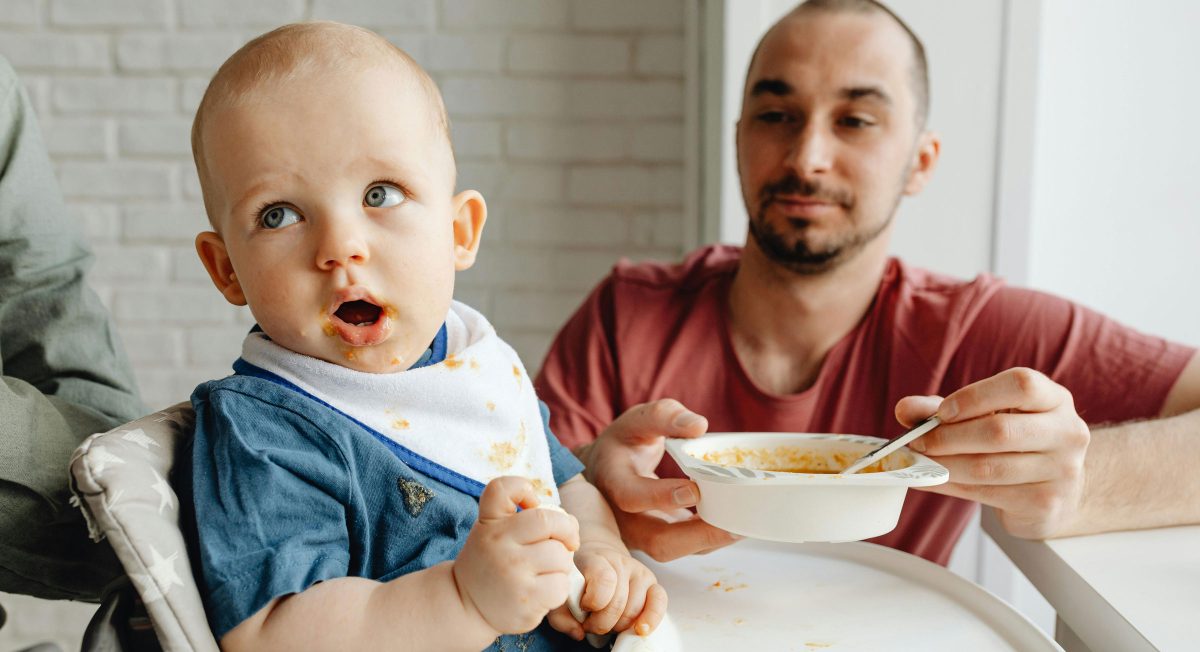Build Healthy Eating Habits for Kids With Tips From a Child Psychologist & Nutritionist
Last Update: October 20, 2025
Ensuring your kids are getting the right nutrients may feel overwhelming, but it doesn’t have to be. To get some expert perspective, we sat down with Dr. Nicole Beurkens, a clinical psychologist with a master’s degree in nutrition and nearly 30 years of experience working with kids and families. As a mom of four, she brings a uniquely personal knowledge to her work, advising parents on how to keep meals practical, nourishing, and realistic.
“We put a lot of our own issues, concerns, and anxieties onto feeding our kids,” she says. “In some ways we overcomplicate it in the most well-meaning of ways.” Beurkens’ biggest reminder for parents? A healthy meal isn’t about perfection or Pinterest-worthy bento boxes — it’s about steady energy, simple nutrients, and giving kids space to explore food at their own pace.

During our conversation, Dr. Beurkens shared her favorite tips for taking the pressure out of cooking for kids and leaning into a child-led approach to eating. The result? A friendlier, calmer mealtime routine that sets kids (and parents!) up for success.
Build Healthy Eating Habits to Make Mealtime Easier
Dr. Beurkens says that by simply sitting down and regularly sharing a meal together, you’re creating a positive ripple effect throughout a child’s life. “Family meals are really protective,” she says. “They’re not just great from the standpoint of helping kids learn good eating habits, but also hugely protective later on in life against issues like substance abuse and mental health struggles.”
“As parents, one job we need to do is to help our kids learn how to tolerate discomfort, and to realize that they will be okay,” she says. This type of confidence-building can start at mealtime by simply exposing kids to new foods or new preparations in a safe, supportive environment. “If we’re going to raise kids who can be resilient, productive, successful adults, they can feel uncomfortable with their chips touching their fruit snacks, but also know that they’ll be okay.”
Here are some of Dr. Beurkens’ best tips for creating healthy eating habits for children:
Make eating a multi-sensory experience.
Allow kids to touch, smell, squish, and yes, maybe even throw a few foods when first starting out.
“Exposure doesn’t just mean eating,” Dr. Beurkens says. “Exposure starts with all those other [senses], too. Help their brain get comfortable with the texture, the smell, and the experience of eating.”
Encourage, but don’t force.
“The solution to addressing picky eating is not to try to force them to eat — that is absolutely going to backfire,” Dr. Beurkens says. Instead, stay calm and open-minded at mealtimes.
If your child is nervous about trying new foods, start by presenting things in a gentle, reassuring way to build up their confidence at the dinner table. “If your child prefers things a certain way, you might still present foods in a sectioned-off plate, but have two things on it that are touching,” Dr. Beurkens says. “Just start slow.”
Expose kids to new foods — comfortably.
When introducing a new food, Dr. Beurkens recommends placing a small amount on the plate next to a “safe food” (a food that you know your child already likes). This ensures that your child is comfortable and doesn’t leave the table hungry, but still encourages trying new things.
Try (and try again).
“We don’t want to forcefully say, ‘You have to eat those three green beans!’” Dr. Beurkens says, “But we also don’t want to say, ‘You don’t have to eat with us because I know you don’t even like to look at green beans.’ There’s a middle ground.”
If your child doesn’t seem to like a food at first taste, don’t write it off. “Your brain needs to try something at least ten times before it can have an opinion of it,” Dr. Beurkens says. Try serving the same food a few more times, or get creative by serving it in new and different ways.
Divide the mental responsibility at mealtimes.
Instead of going into mealtime determined to get your child to eat certain foods, Dr. Beurkens references a concept from renowned dietitian and family therapist Ellyn Satter known as the “division of responsibility in feeding” (or “sDOR”).
This concept encourages parents to take leadership with the what, when, and where of feeding, and lets the child determine how much of and whether to eat what you provide. By doing your part by providing nutritious meals at set times every day, you can let go of the guilt associated with whether or not your child eats — and feel confident that in time, your child will catch on to the routine.
Practical Tips for Preparing Family Meals

Dr. Beurkens recommends building a toolkit for actually cooking and preparing regular meals (even when life gets busy). “I’m always looking for ways to make it easy and practical for parents to implement the kinds of things that we tell them would be helpful for their kids’ health,” she says.
Here are some of her best tips for making easy, nutrient-dense meals at home:
1. Keep things simple.
If you aim to pack a Pinterest-worthy lunch every day of the week, you’re sure to burn out quickly. “Nothing has to be fancy,” Dr. Beurkens says. “A perfectly acceptable lunch is a bag of carrot sticks, a pre-made ranch dip, some deli meat, and a bag of low-added-sugar fruit snacks.”
2. Lean into shortcuts.
“I’ve always been a big proponent for families to cook and eat at home as much as possible,” Dr. Beurkens says. “We know that from a nutritional standpoint, the food that we prepare at home, even if it’s processed, is [mostly] better than what we get out.” Pre-cut veggies, frozen fruit, and ready-made pantry staples can all be essential parts of a modern kitchen; Dr. Beurkens even recommends saving leftovers to use as next-day meal starters. As long as it’s nutritionally dense, it’s fair game for making meals easier.
3. Get the kids involved in the kitchen.
Instead of viewing your kids as an added stressor when cooking, start looking at them as little helpers. “The more that we can incorporate kids in the day-to-day processes around foods, like grocery shopping, going to the farmer’s market, preparing food, serving food to other people, the better,” Dr. Beurkens says. “Even if they’re not eating it, this is all an important part of helping them get comfortable with more foods.”
Dr. Beurkens says they can start observing the cooking process as soon as they start eating, and you can give them more responsibility as they grow. “If you’re going to make some muffins, a 14-month-old can help stir and share the experience of smelling the good smells,” she says. “Older kids can build skills like learning to read a recipe and figure out what ingredients you’ll need.”
Read more about kids’ nutrition:
Kids’ Nutrition Tips for Every Age
Nutrition Activities, Games & Facts for Kids
101 Snack Ideas for Kids